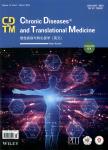Preferences and attitudes of young Chinese clinicians about using a shared decision making tools for communicating cardiovascular risk
Preferences and attitudes of young Chinese clinicians about using a shared decision making tools for communicating cardiovascular risk作者机构:Department of Cardiology The First Affiliated Hospital of Dalian Medical University Dalian Liaoning 116011 China Department of Cardiology Beijing Anzhen Hospital Capital Medical University Beijing 100029 China Knowledge and Evaluation Research Unit Mayo Clinic Rochester MN 55902 USA Mayo Graduate School Mayo Clinic Rochester MN 55902 USA Division of Cardiology Mayo Clinic Jacksonville FL 32224 USA Division of Endocrinology Mayo Clinic Rochester MN 55902 USA
出 版 物:《Chronic Diseases and Translational Medicine》 (慢性疾病与转化医学(英文版))
年 卷 期:2019年第5卷第2期
页 面:105-112页
核心收录:
学科分类:10[医学]
基 金:supported by CTSA from the National Center for Advancing Translational Sciences
主 题:Decision aid Shared-decision making Cardiovascular risk China
摘 要:Objective: This study assesses the attitudes and preferences of Chinese clinicians toward their involvement in shared decision making (SDM). Methods: From May 2014 to May 2015, 200 Chinese clinicians from two hospitals were enrolled to complete a survey on their attitude towards SDM. We conducted the survey via face-to-face interviews before and after an educational intervention on SDM among young Chinese clinicians. The clinicians were asked to give the extent of agreement to SDM. They also gave the extent of difficulty in using decision aids (DAs) during the SDM process. The variation in the range of responses to each question before and after the SDM intervention was recorded. The frequency of changed responses was analyzed by using JMP 6.0 software. Data were statistically analyzed using Chi-square and Mann—Whitney U tests, as appropriate to the data type. Multiple logistic regressions were used to test for those factors significantly and independently associated with preference for an approach for each scenario. Results: Of the 200 young Chinese clinicians sampled, 59.0% indicated a preference for SDM and a desire to participate in SDM before receiving education or seeing the DA, and this number increased to 69.0% after seeing the DA with the sample video of the SDM process on Statin Choice. However, 28.5% of the respondents still reported that, in their current practice, they make clinical decisions on behalf of their patients. The clinicians who denied a desire to use the DA stated that the main barriers to implement SDM or DA use in China are lack of time and knowledge of SDM.



